Therapeutic effects of total saikosaponins from Radix bupleuri against Alzheimer's disease
- PMID: 35935875
- PMCID: PMC9351603
- DOI: 10.3389/fphar.2022.940999
Therapeutic effects of total saikosaponins from Radix bupleuri against Alzheimer's disease
Abstract
Alzheimer's disease (AD) is a neurodegenerative disease characterized by memory loss and cognitive dysfunction in the elderly, with amyloid-beta (Aβ) deposition and hyperphosphorylation of tau protein as the main pathological feature. Nuclear factor 2 (Nrf2) is a transcription factor that primarily exists in the cytosol of hippocampal neurons, and it is considered as an important regulator of autophagy, oxidative stress, and inflammation. Total saikosaponins (TS) is the main bioactive component of Radix bupleuri (Chaihu). In this study, it was found that TS could ameliorate cognitive dysfunction in APP/PS1 transgenic mice and reduce Aβ generation and senile plaque deposition via activating Nrf2 and downregulating the expression of β-secretase 1 (BACE1). In addition, TS can enhance autophagy by promoting the expression of Beclin-1 and LC3-II, increasing the degradation of p62 and NDP52 and the clearance of phosphorylated tau (p-tau), and reducing the expression of p-tau. It can also downregulate the expression of nuclear factor-κB (NF-κB) to inhibit the activation of glial cells and reduce the release of inflammatory factors. In vitro experiments using PC12 cells induced by Aβ, TS could significantly inhibit the aggregation of Aβ and reduce cytotoxicity. It was found that Nrf2 knock-out weakened the inhibitory effect of TS on BACE1 and NF-κB transcription in PC12 cells. Moreover, the inhibitory effect of TS on BACE1 transcription was achieved by promoting the binding of Nrf2 and the promoter of BACE1 ARE1. Results showed that TS downregulated the expression of BACE1 and NF-κB through Nrf2, thereby reducing the generation of Aβ and inhibiting neuroinflammation. Furthermore, TS can ameliorate synaptic loss and alleviate oxidative stress. In gut microbiota analysis, dysbiosis was demonstrated in APP/PS1 transgenic mice, indicating a potential link between gut microbiota and AD. Furthermore, TS treatment reverses the gut microbiota disorder in APP/PS1 mice, suggesting a therapeutic strategy by remodeling the gut microbe. Collectively, these data shows that TS may serve as a potential approach for AD treatment. Further investigation is needed to clarify the detailed mechanisms underlying TS regulating gut microbiota and oxidative stress.
Keywords: Alzheimer’s disease; Aβ; Nrf2; autophagy; gut microbiota; p-tau; total saikosaponins.
Copyright © 2022 Li, Zou, Cheng, Yang, Li, Zhao, Ma, Tian and Yao.
Conflict of interest statement
The authors declare that the research was conducted in the absence of any commercial or financial relationships that could be construed as a potential conflict of interest.
Figures
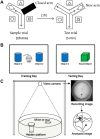
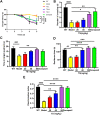






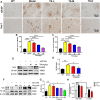
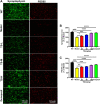


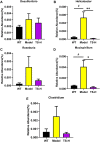

Similar articles
-
Berberine improves cognitive impairment by promoting autophagic clearance and inhibiting production of β-amyloid in APP/tau/PS1 mouse model of Alzheimer's disease.Exp Gerontol. 2017 May;91:25-33. doi: 10.1016/j.exger.2017.02.004. Epub 2017 Feb 20. Exp Gerontol. 2017. PMID: 28223223
-
Tetramethylpyrazine Nitrone (TBN) Reduces Amyloid β Deposition in Alzheimer's Disease Models by Modulating APP Expression, BACE1 Activity, and Autophagy Pathways.Pharmaceuticals (Basel). 2024 Jul 30;17(8):1005. doi: 10.3390/ph17081005. Pharmaceuticals (Basel). 2024. PMID: 39204110 Free PMC article.
-
ABCA7 Deficiency Accelerates Amyloid-β Generation and Alzheimer's Neuronal Pathology.J Neurosci. 2016 Mar 30;36(13):3848-59. doi: 10.1523/JNEUROSCI.3757-15.2016. J Neurosci. 2016. PMID: 27030769 Free PMC article.
-
Therapeutic potentials of plant iridoids in Alzheimer's and Parkinson's diseases: A review.Eur J Med Chem. 2019 May 1;169:185-199. doi: 10.1016/j.ejmech.2019.03.009. Epub 2019 Mar 8. Eur J Med Chem. 2019. PMID: 30877973 Review.
-
Impaired autophagy and APP processing in Alzheimer's disease: The potential role of Beclin 1 interactome.Prog Neurobiol. 2013 Jul-Aug;106-107:33-54. doi: 10.1016/j.pneurobio.2013.06.002. Epub 2013 Jul 1. Prog Neurobiol. 2013. PMID: 23827971 Review.
Cited by
-
Ameliorative role of Polyscias fruticosa leaf extract in aluminum chloride-induced neurotoxicity flies possibly mediated by N-methyl-D-aspartate receptor antagonistic and anticholinesterase active compounds.J Nat Med. 2025 Jul 11. doi: 10.1007/s11418-025-01928-0. Online ahead of print. J Nat Med. 2025. PMID: 40646316
-
A Direct Relationship Between 'Blood Stasis' and Fibrinaloid Microclots in Chronic, Inflammatory, and Vascular Diseases, and Some Traditional Natural Products Approaches to Treatment.Pharmaceuticals (Basel). 2025 May 12;18(5):712. doi: 10.3390/ph18050712. Pharmaceuticals (Basel). 2025. PMID: 40430532 Free PMC article. Review.
-
Effects of total saikosaponins on CYP3A4 and CYP1A2 in HepaRG cells.Exp Ther Med. 2024 Mar 21;27(5):217. doi: 10.3892/etm.2024.12505. eCollection 2024 May. Exp Ther Med. 2024. PMID: 38590569 Free PMC article.
-
Bridging traditional Chinese medicine and Alzheimer's disease: the pivotal role of gut microbiota in multitarget therapeutic mechanisms.Front Pharmacol. 2025 Jun 27;16:1630205. doi: 10.3389/fphar.2025.1630205. eCollection 2025. Front Pharmacol. 2025. PMID: 40657642 Free PMC article. Review.
-
Investigating the Therapeutic Mechanisms of Total Saikosaponins in Alzheimer's Disease: A Metabolomic and Proteomic Approach.Pharmaceuticals (Basel). 2025 Jan 15;18(1):100. doi: 10.3390/ph18010100. Pharmaceuticals (Basel). 2025. PMID: 39861162 Free PMC article.
References
LinkOut - more resources
Full Text Sources
Miscellaneous

